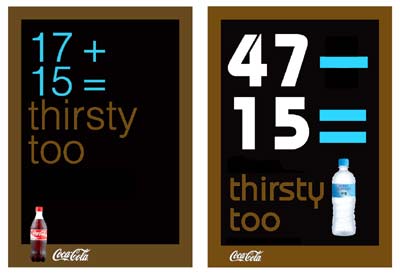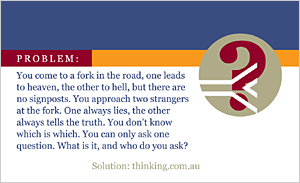Some years ago, I would give a lecture to aspiring young advertising writers. My aim was to drive home the idea that “Writing is like sex, if you don’t enjoy doing it, then neither will the other person.”
There is a lot of sex happening on the internet, but it’s not the kind that I am talking about. It is without passion or purpose or direction or any idea of what a piece of communication should achieve.
The Brain Bomb.
When it comes to communicating, whether it is writing, presenting, creating a film, a website or whatever, the outcome, I believe, should be to create some kind of interaction with the reader’s brain.
I’m sure we all try to do that. In some instinctive way we kind of know the process. My aim was to rationalise it, give it a physical entity, so that I could then pass it on to others.
Always start off with a Joke
The way that I explained it was to tell a joke. This is the joke:
What is the difference between a Range Rover and a Porcupine? (Don’t look at the answer yet.)
There are in fact two answers to this. Each creates a different thinking process. Only one stimulates the brain and has more chance of being remembered.
And the answer is?
- The Range Rover has the pricks on the inside.
- The Porcupine has the pricks on the outside.
The important thing here is to feel what each answer is doing. With answer #1, there is nothing to think about. The answer gives you everything you need to know. There is no brain stimulation required. No brain bomb, not even a brain fart.
With answer #2, you have to join the dots. Your brain has to make the connection that if the porcupine has the pricks on the outside, then the Range Rover must have the pricks on the inside. (Ha, ha, ha).
It’s like the difference between an ordinary Circus and Cirque du Soleil.
Your brain was stimulated, however slightly. Once you can open the brain to stimulation you have a real chance of taking a hold.
Know what the right answer can do.
The aim of any piece of communication is to act as a grappling hook. You launch it out over the audience. You watch as it slowly arcs across its path. And you hold your breath that after your listener has left; the hook has implanted itself firmly into their brain.
How do you put this into practice? Let me show you a couple of examples:
#1: What is thirst equal to?

A little while ago there was a brief to write a couple of posters that would appear in the Food Halls of Shopping Malls. The brief was to tell people they are thirsty and hopefully they’ll buy a drink. The client (I’m sure you’ll recognise who it is) provided an example of a headline which went: “Shopping is thirsty work”.
Oh, come on, it’s not that bad.
It answers the brief, it is kind of clever and the client liked it. Read the line again and see what it does to your brain. Well? There isn’t a lot happening. Yes, the headline is obvious and so the thinking process never opens any doors.
The idea you see below was to entice the brain to do some work. The Poster that was presented is below. I don’t believe the brain can pass up a challenge. It is in an environment (shopping) where it is already thinking about numbers, dollars and adding up the cost of things. So this environment is used, and then a nice little twist is added at the end.
There were a few of these, which all played with the answer being “thirsty”.
#2: Are you Thinking?
Thinking is the name of an Australian company that works as an e-business consultancy service with a set of very interesting business cards. Business Cards? How exciting can they be? Have you ever read a business card and asked for a couple more?
The idea was once again to stimulate the brain by using the name of the company as the driver for the rationale behind the cards that eventually were printed. Each employee has six cards printed with a different puzzle on the back. To see the solution, go to the website.
Front:

Back:

(It reads: You come to a fork in the road, one leads to heaven, the other to hell, but there are no signposts. You approach two strangers at the fork. One always lies, the other always tells the truth. You don’t know which is which. You can only ask one question. What is it and who do you ask? Solution: thinking.com.au)
Early feedback is that most people are asking for all six cards. Suddenly, Thinking is taking up six slots in a potential client’s Business card Holder.
Does this pull the wool over the eyes or the cotton, or linen?
A brain bomb is not just about puzzles or equations. It’s more than that. I don’t want to give the impression that the only way to stimulate the brain is to give it a puzzle or some mathematical equation to work out. That sounds too much like hard work for the creator. And we’d all need a beautiful mind like John Nash’s just to understand the designs around us.
But sometimes you do see pieces of communication that change the rules and pose new questions. Benetton is one of those campaigns, we all know them well. Whether you like them or not, doesn’t matter, the important thing here is the way that they intrigue and demand participation or at the least an opinion.

Even 12 years after its first appearance and all the controversy it raised, the Benetton images are still incredibly eye-catching and instantly memorable.
Most of us reading this are in the business of communication, whether it be is a static form such as a printed piece, or a dynamic form such as the internet. Our aim is always to ensure that the design is interactive and that it interacts with the brain of the person viewing the piece.
If you can achieve that, then you have succeeded in interacting with the user, the client, and the medium you are using. The aim of any piece of communication is to stimulate the brain, cause some frontal lobe activity. It’s what makes a piece “sexy” and excites us all.
If you can do this, then you have a greater chance of being remembered. The grappling hook takes a strong hold. And the sex is enjoyed by all.
Thanks to MightyWorld who were responsible for the designs on the Coke and Thinking examples above. The Benetton Poster is photographed by Oliviero Toscani.
This article first appeared in Design in Flight online magazine’s January 05 issue. The magazine no longer exists.
